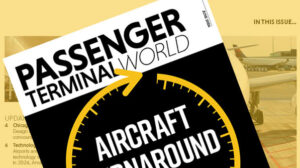Tres Izzard, president of Whill Mobility Services North America, explores how autonomous technology is addressing the long-standing mobility challenges that travelers and airport staff face at the airport.
In a world where technological advances are the norm, airports and airlines are undergoing a transformation driven by the need to keep up with evolving technology. One challenge is that the traditional modes of transportation currently within airport environments can lead to both delays and inefficiencies, especially as the footprints of airports become larger and passengers need to navigate longer distances to reach their destinations within a facility. It is essential to recognize these mounting mobility challenges and accelerate the deployment of autonomous solutions to enhance passengers’ experiences.
The importance of innovation
Airports and airlines continuously seek ways to improve efficiency and participate in innovation trends. According to Forbes Advisor, 40% of Americans plan to travel more in 2024, which, in turn, means more passengers at the airport and higher demand for push-chair services. Airports are acknowledging current limitations and are exploring additional innovative mobility solutions, including autonomous technologies.
“This approach enables operators to help lead the industry, enhance operational efficiency and elevate the overall passenger experience”
Airports worldwide are steadily integrating autonomous mobility solutions into their daily operations. The resulting streamlined, safe passenger experience encourages traveler independence and supplements push-chair services. The technology combines sensors with an intuitive interface tailored for individuals requiring assistance navigating airports, and enables seamless travel across long distances.
Jump-starting implementation
To get involved in the autonomous initiative, stakeholders can stay informed on the latest developments in this space and adopt them early, giving them a first-mover advantage and the ability to transform their operations and passengers’ experiences. Travelers can support this initiative by advocating for autonomous integration at their local airport. Moreover, they can engage with the airport authorities and policymakers and support initiatives that promote this advancement in airports.

Credit: Whill Mobility Services North America
Decision makers at airlines, push operators and airports can take proactive steps to engage in autonomous initiatives by identifying a specific airport terminal suited to commercial autonomous deployment. They can then embark on the optimization process to refine and integrate the technology by initiating a deployment at a chosen facility. Once the optimization is complete, they can expand the autonomous system within that airport and replicate the success at other airports and with other airlines. This approach enables operators to help lead the industry, enhance operational efficiency and elevate the overall passenger experience.
Moving forward with this initiative requires a collaborative effort from all stakeholders and it will take time and patience to ensure a smooth transition. Stakeholders must initiate the process now. Integrating autonomy into conventional transportation modes, like wheelchairs operated by push-chair workers, represents a shift for airport operations, workforce and passengers. These innovations will optimize and complement current push services to help meet the growing demands of increased travelers and an aging population. By 2050, the World Health Organization projects there will be a staggering 2.1 billion people over the age of 60, further underscoring the need for such advancements.
In summary, the rise of autonomous mobility services in airports addresses the long-standing challenges travelers face and complements the efforts of the dedicated workforce for push-chair services. While ‘autonomous’ is a comparatively recent term, airports across the globe are actively scoping out autonomous solutions that fit the needs of their airport operations. This is a shared responsibility, and autonomous technology is paving the way for a safe, efficient, independent and enjoyable travel experience.
This article originally appeared in the June 2024 issue of Passenger Terminal World. To view the magazine in full, click here.



